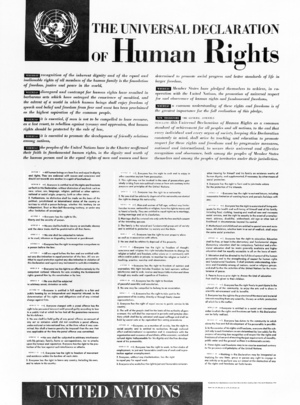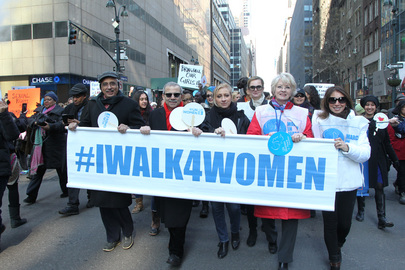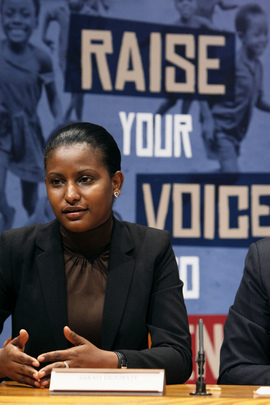Chapter 27: Human Rights
Learning Objectives
- Learn from the national and global perspectives on human rights for immigrants and refugees.
- Recognizing that the world is constantly and rapidly changing.
- Recognizing that Global/national/international events can have an impact on individuals, families, groups, organizations, and communities.
- Global implications dictate that we foster international relationships and opportunities to address international concerns, needs, problems, and actions to improve the well-being of not only U.S. citizens, but global citizens.
27.1 Introduction
Fatima and her three girls, ages 18 months, 4 and 8 years old, were exhausted by the time they reached the border between the United States and Canada. They had been on the bus from New York for two whole days: it had been very hard changing the baby’s diapers in the tiny bus bathroom that was their only option. Though Fatima had proper passports from the African nation they had fled, she told immigration officials that she was actually fleeing a neighboring country, since there was civil war raging and she thought they would be more likely to let her and her family into Canada. But since the passports did not match her story, United States officials confiscated all of their identity documents and sent her and the girls back to New York. Penniless and alone, the little family made their way to Chicago, where Fatima had heard they were more generous to refugees like herself. What was she fleeing with her three little girls? The prospect of their having to undergo the same female genital mutilation procedure that she had endured at the age of 9. Though their future was extremely unsure, Fatima knew that she had done the only thing she could to protect her girls. “In my country, they circumcise the boys in the hospital under anesthesia,” she told her therapist at the free clinic. “But the girls – no – the girls are circumcised in the bush with rusty razors and no anesthetic at all. This is what the girls get.” For Fatima, there was no other choice for her but to flee and take the girls with her. Even her husband agreed though he had stayed behind in their home country to try to keep sending them money and support. And so, Fatima was alone with her children in a foreign land, hoping for help and guidance with navigating the new language, customs, culture, and realities of the United States.
Background
There are currently an estimated 263,000 refugees and 84,300 asylum seekers residing in the United States (UNHCR; United Nations High Commissioner for Refugees, 2013). These estimates are staggering but will continue to increase in the subsequent years as a result of ongoing-armed conflict and political unrest around the world. If it were not for the significant and ongoing international human rights violations, the number of displaced families – both immigrants and refugees –would be considerably smaller. Families flee their home countries for a range of reasons; from escaping oppressive regimes, as is the case in Syria and Iraq, to attempting to better their economic situations, as is the case in Mexico and much of Latin America. The United States, amongst other Western countries, regularly sees influxes of immigrant and refugee families from around the world depending on the sociopolitical and historical context of the time. Some of these families are intact, but the vast majority are scattered and separated around the world.
According to the Migration Policy Institute (MPI, 2019), the top five countries of origin for resettlement in the United States are the Democratic Republic of Congo, Burma, Ukraine, Eritrea, and Afghanistan. President Trump’s announcement of additional screening for refugees from certain countries may shift these demographics somewhat (MPI, 2015). The controversy over admitting refugees into the United States from certain parts of the world, including Syria, continues to rage unabated in the mainstream press and online. For example, the fear following the Paris attacks of November 2015 prompted governors of 31 states to refuse to admit Syrian refugees; although they do not have the power to control nationality laws (Barajas & Frazee, 2015).
The purpose of this chapter is to provide a broad overview of human rights and lay out some of the essential concepts that are critical to understanding how this global issue affects immigrant and refugee families. We will present the history and general theories of human rights law, as well as explore how various issues pertaining to the current relationship between international human rights law and domestic sovereignty are being dealt with in the United States. Additionally, we will examine how specific human rights issues impact refugee and immigrant families in the United States. Implications for research, policy, and practice, questions for further discussion, and a case study can be found at the end of the chapter.
Kirsten Lind Seal (Owner-operator at Lind Seal Counseling & Consultation LLC) and Damir S. Utržan (Family Social Science, University of Minnesota)
27.2 What are Human Rights?
António Guterres, the United Nations High Commissioner for Human Rights (UNHCR), wrote that the “…UNHCR has never had to address so much human misery in its 64-year history” (Project Syndicate, 2015). This maxim guides the importance of understanding and exploring the intricacies of human rights. The foundational definition of human rights, according to the UNHCR, encompasses “…inherent rights to all human beings, whatever the nationality, place of residence, sex, national or ethnic origin, color, religion, language, or any other status.” This definition is critical to understanding how and why the international community endeavors to define and protect these rights. A complete understanding of human rights includes moral values, ethical and philosophical norms such as autonomy, justice, beneficence, and non-maleficence. All of these characteristics factor into the creation of a particular paradigm of rights for human beings that has been specifically and gradually shaped into international law since the United Nations was founded in 1945.
While human rights are based on moral values, it is important to recognize that values are fundamentally different from rights. The concept of values addresses what is important whereas human rights address social practices that seek to empower human beings. A right is not merely a benefit since having a right also gives a person a significant legitimacy within the system of governmental authority. According to Donnelly (2003), “…a human rights conception of human dignity and political legitimacy rests on the fact that human beings have an essential, irreducible moral worth and dignity irrespective of the social groups to which they belong” (p. 27). This means that universal human rights, for the purpose of this discussion, are rights that have been codified (i.e., incorporated into a legal code) by the international community.
While human rights are based on an ideal, they also provide a social means of ensuring that nation-states grant to all human beings the opportunity to lead a life of human dignity; a life worthy for a human being. The specifics of exactly what human rights should entail have been enshrined in documents such as the Universal Declaration of Human Rights (UDHR, 1993), which conceptualizes the idea of human rights as a “self-fulfilling moral prophecy” (Donnelly, 2003, p 15). The UDHR has led to several international treaties, such as the International Covenant on Civil and Political Rights and the International Covenant on Economic Social, and Cultural Rights. These statutes and treaties are created by societies coming together in order to codify global requirements for the kind of human behavior that will support the thriving of all. Thus the notion of human rights as a social practice is integral to the process of understanding the impact on immigrant and refugee families.
27.3 The Universal Declaration of Human Rights
In response to the gross human rights violations following the Second World War, the UDHR was chartered by the United Nations in an attempt to prevent such atrocities from being committed again. The UDHR’s preamble states unequivocally “recognition of the inherent dignity and of the equal and inalienable rights of all members of the human family is the foundation of freedom, justice and peace in the world” (OHCHR; Office of the High Commissioner for Human Rights, 1948). Following the preamble are 30 Articles, which lay out in detail the specific rights to which all human beings should be entitled. According to the UNHCR, there are 389 different translations of this document.
The UDHR encompasses both negative (i.e., the right to not be tortured, imprisoned without cause, or enslaved) as well as positive (i.e., the right to own property, the right to freedom of thought, and the right to marry) rights. It also enumerates, for the first time, the core principles of human rights, which are: universality, inter-dependence and indivisibility, equality, and non-discrimination. The UDHR states further that human rights are not merely an entitlement, they also include rights and obligations. In other words, having a right brings with it a particular obligation as well. If we are to enjoy our rights as humans, then we need to respect these same rights for others. These concepts have been reiterated in many subsequent international human rights treaties, declarations, and conventions. This document (UDHR), along with the International Covenant on Civil and Political Rights (ICCPR) and the International Covenant on Economic, Social, and Cultural Rights (ICESCR), are considered to be the foundational pillars of international human rights law and the legal basis for all subsequent human right norms, standards, and rules.
27.4 The Status of Human Rights in the United States
While human rights have in large part been internationalized, they have to be implemented at the domestic level. According to Donnelly (2003), this dichotomy permits countries to fulfill dual and seemingly incompatible roles: essential protector and principle violator. In the United States, this duality can be seen in the difference between the laws upon which the country was founded and the implementation of these laws in an equitable fashion.
The Bill of Rights, as codified in the United States Constitution, lays out specific human rights that parallel those to which the majority of international human rights regimes adhere. Thus, the founding myths of this country are grounded in the central place of human rights (Donnelly, 2003). In fact, many if not most liberal democracies share these constitutive principles. As Koopmans (2012) points out, “internal constitutive principles – such as the right to exercise one’s religion…imply that the granting of rights to individuals and groups will be more similar across democracies than it will be between them and non-democracies” (p 25). And yet, there remain significant areas where United States domestic policy can be seen to violate various rights of various portions of the population at any given time.
Political Issues
The most pressing human rights issues in the United States revolve around immigrant and refugee families. The strategic priorities outlined by the UNHCR include: (a) countering discrimination; (b) combating impunity and strengthening accountability; (c) pursuing economic, social and cultural rights and combating poverty; (d) protecting human rights in the context of migration; (e) protecting human rights during armed conflict, violence and insecurity; and (f) strengthening international human rights mechanisms and the progressive development of international human rights law. Priorities (a), (c) and (d) make up the elements most germane to the human rights situation in the United States today. The difficulties faced by immigrant and refugee families include classism, racism, sexism, and discrimination on the basis of religion as well as uncertain economic circumstances.
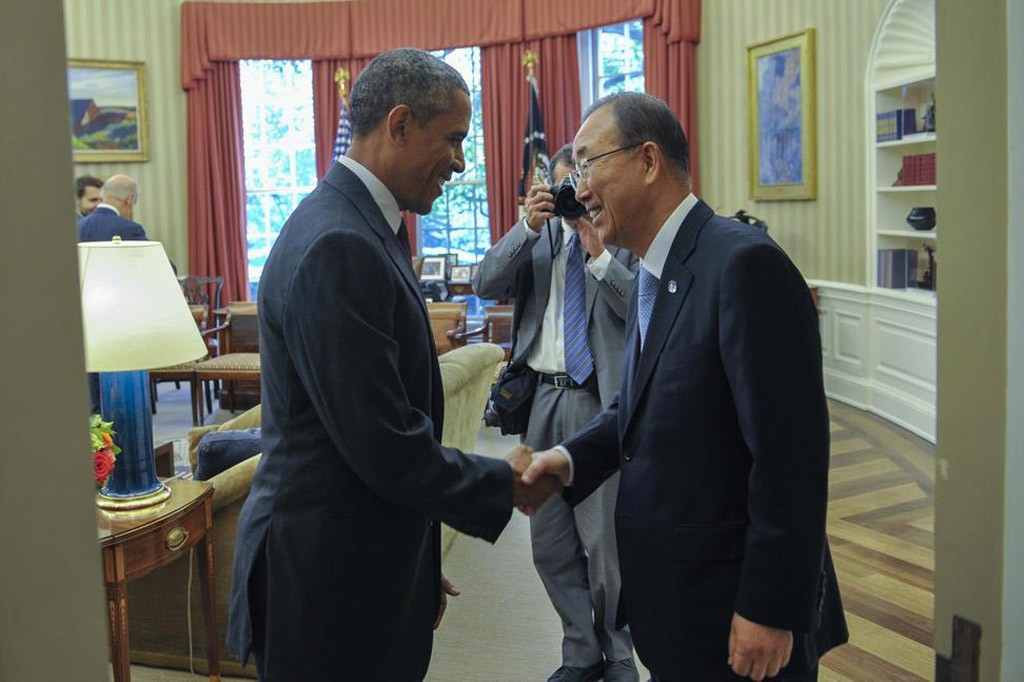
The United States voted in favor of the UDHR but it did not ratify (i.e., sign) the document. While various theories attempt to explain relevant reasons, numerous rights enshrined in the UDHR are in the Constitution and Bill of Rights (AHR; Advocates for Human Rights, n.d.) The United States’ apparent sense of exceptionalism to international standards and norms has been evidenced over time in two main ways: the ongoing torture of Guantanamo Bay detainees and the revelation that American social scientists were involved in reverse engineering torture techniques for the government. While the United States may at times act outside of the limitations established by the international community (and specifically the UDHR) this stance is not the focus of this chapter. As the UNCHR notes, “national and local politicians have sought to mobilize electoral support by promoting xenophobic sentiments, exaggerating the negative impact of hosting refugees while ignoring the fact that refugees can actually attract international assistance and investment to an area, creating new jobs and trading opportunities” (2006, p 32). In this way, the refugee situation has often been used as a political football in United States political culture.
Video
Ruben Parra-Cardona, Ph.D., LMFT discusses discrimination and systemic issues affecting Latino immigrants in the United States (6:30-9:19).
Legal Issues
The current legal climate in the United States is negatively skewed against international human rights, particularly as it pertains to the legal status of displaced persons (persons who are forced to leave their home country due to war, persecution or natural disasters). There are many reasons to be pessimistic about successfully using international human rights arguments as a way of advancing displaced person’s rights in the United States (Chilton, 2014; Cole, 2006; ICHR; International Council on Human Rights, 2008). According to Cole (2006), in spite of its history as a nation of immigrants, the United States remains deeply nationalist and quite parochial; the law reflects that parochialism. Furthermore, “International human rights arguments are often seen as the advocates’ last refuge pulled out only when there is no other authority to cite” (Cole, 2006, p. 628).

However, this trend seems to be moving the nation towards the transnational in terms of how human rights law is perceived and implemented in the legal system and culture of the United States. This means that increased globalization and interdependence has had the effect of strengthening the influence of international human rights standards in the United States. The hope is that these standards may “command greater respect from our own domestic institutions” (Cole, 2006, p 643). Cole further posits that the paradigm shift in the United States from national to transnational, merging the national and the international, parallels the shift in the United States from state to federal power that occurred with the advent of the New Deal in the 1930s. In other words, there is reason to hope that gradual change is coming within the legal system in the United States with regards to its acceptance of the international human rights regimes, norms, and standards.
Refugee families and asylum seekers. The terms of refugee and asylum seeker are often used interchangeably, but there are important legal differences between them. These differences not only determine which resources they are eligible for once arriving in the United States but also in which phase of the legal process they are currently.
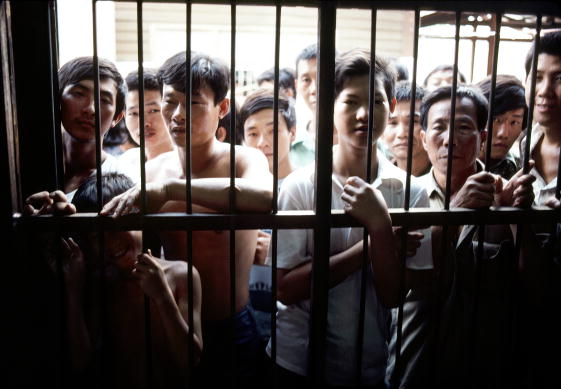
Refugees. An estimated 51.2 million people were displaced since 2013 as a direct result of persecution, war, violence, and human rights atrocities (UNHCR, 2018). In 2017, USCIS received 139,801 affirmative asylum applications and the EOIR received 119,303 defensive asylum applications, but only 26,568 applications were approved (DHS, 2019). The remaining applications were abandoned (1,439), withdrawn (6,400), or simply unaccounted for (11,391). Being that the recent United States population estimate is 318 million people, refugees make up less than 1% of the population. The families seeking asylum from their home countries often have significant traumatic histories and thus can loom larger in the public sphere than other types of immigrants. Most of these families are fleeing extreme injustices in their home country, such as war, political instability, genocide, and severe oppression. Because of the uncertainty of their original situation, it remains quite difficult for the Department of Homeland Security (DHS) to determine who is legitimately eligible for asylum.
Asylum seekers. A further complication for government agencies lies in trying to determine when and how to return rejected asylum seekers to their home countries (Koser 2007). Within the domain of international migration studies, there has been traditionally a differentiation made between refugees (involuntary migration) and labor seekers (voluntary migration). While the former group represents the political outcome of global systems and interactions and the latter group represents the economic outcome, nonetheless, it is quite clear that people migrate for a whole complex series of reasons, including social ones (Koser, 2007). If an asylum seeker’s claim for asylum is denied, they are placed in deportation proceedings. During this process, an immigration judge (IJ) works with the asylum-seekers’ attorney to determine the removal process. It is important to note that displaced persons are rarely detained and/or immediately placed on the next flight to their country of origin.
Women and Children’s Rights
The UNHCR has, within the last decade, specifically recognized gender as a fundamental human rights issue. The policy on refugee women is based on the recognition that becoming a refugee affects men and women differently: “… even where there is no armed conflict, women and children continue to be subject to serious human rights violations resulting from discrimination and/or violence against them due to their gender…” (Zeiss Stange, Oyster, & Sloan, 2012). Many of the human rights issues that involve women and children obviously impact families in a very deep way. This category of violation stems from historical perceptions of women and children as property or “chattel.”
Domestic violence. The issue of domestic violence, for example, is one that disproportionately affects women and children. In immigrant families from more patriarchal societies, the home is still considered the woman’s domain whereas earning is considered the man’s, even when both work for pay outside the home. This particular division of labor can increase the power imbalance in these relationships, which can create a setting within which domestic violence may be more likely to occur (Perilla, 1999). This imbalance can become particularly problematic when the power hierarchy between parents and children is inverted once they arrive in the United States. Since wage-earning immigrant women often gain autonomy and greater gender equity, while men tend to lose ground, this adds further threats to male self-esteem that is already being eroded by classism, racism, and legal status (Mahler & Pessar, 2006).
Children’s issues. Children are disproportionately impacted in other ways as well. Children of displaced families, asylum-seekers in particular, are more likely to be without health insurance and have less access to public programs across nationalities (Blewett, Johnson, & Mach, 2010). This is due to their legal designation of being persons who are ineligible for public services (i.e., health insurance). The literature suggests that traumatic events impact each family member regardless of whether they were directly or indirectly exposed. This is important because traumatic stress, loss, and grief extend beyond individual family members and influence the entire family (Nickerson, Bryant, Brooks, Silove, Steel, & Chen, 2011). Detention and deportation, in particular, pull families apart and make it much more difficult for parents and other caregivers to access necessary resources for their children. This is true for many immigrant families because there are many different legal statuses within families due to, for example, children being born to undocumented parents in the United States. Thus the tendency is for these families to be more careful and anxious about seeking out services that they might qualify for because of the fear of being reported to immigration authorities.
Female genital mutilation. Female genital mutilation (FGM), also known as female genital cutting, is a human rights issue of growing importance due to the increasing number of refugees arriving in the United States from East and West Africa. This practice, sometimes also known as female circumcision, is a long-standing cultural tradition in some communities. Although FGM is generally practiced in Muslim communities, there is no actual religious mandate for it (Cook, Dickens, & Fathalla, 2002). While the practice is deeply cultural, it is illegal in many African nations. However, regardless of legality, the practice is widespread. Fatima, for example, from the opening story, told the first author, “The president’s daughter has been circumcised – how will he enforce this law? Are they going to put him in jail? Hah!” (Personal communication, 2011).
According to Mather and Feldman-Jacobs (2015), over 500,000 girls and women have undergone genital mutilation in the United States. FGM is regarded as a human rights issue for women because it can cause severe health sequelae. Even though the family of the child may consent to the procedure, this does not make it a legal practice as consenting to physical mutilation can never be legal (Cook, et al., 2002) However, recommendations include more education and counseling of women as opposed to the firmer application of the law in cases like these. This practice remains illegal in the United States, which may have the effect of pushing those refugees wishing to practice this even further underground. In other words, shame and stigma often accompany FGM. And though it can be presented as a convincing claim for asylum in the United States, many women do not feel comfortable doing so and instead pursue other means (USCIS; United States Citizenship and Immigration Services, 2019).
In 2012, the United Nations issued an interagency resolution calling for the elimination of FGM worldwide. The resolution states unequivocally that “seen from a human rights perspective, the practice reflects deep-rooted inequality between the sexes, and constitutes an extreme form of discrimination against women” (WHO; World Health Organization, n.d.). The hope is that this ban will speed the process of eliminating this dangerous and painful practice worldwide.
Video
This video discusses the border crisis and children separated from their families (0:00-7:06).
Sex Trafficking and Human Trafficking
The United Nations Protocol to Prevent, Suppress, and Punish Trafficking in Persons, Especially Women and Children, defines trafficking as the “…recruitment, transfer, harboring or receipt of persons, by any means of threat or force…for the purpose of exploitation.” This crime is globally categorized as either sex trafficking or labor trafficking. According to the DOJ (2006), there have been an estimated 100,000 to 150,000 sex trafficking victims in the United States since 2001. Furthermore, estimates of persons currently in situations of forced labor or sexual servitude in the United States range from 40,000 to 50,000.
The leading countries of origin for foreign victims in fiscal year (FY) 2011 were Mexico, Philippines, Thailand, Guatemala, Honduras, and India (DOJ, 2012). In 2011, “notable prosecutions included those of sex and labor traffickers who used threats of deportation, violence, and sexual abuse to compel young, undocumented Central American women and girls into hostess jobs and forced prostitution in bars and nightclubs on Long Island, New York” (DOS, 2012). According to the International Labor Organization (ILO, 2019), globally an estimated 4.5 million women, men, and children are sexually exploited. While there is some legal benefit (a self-petitioned visa in the United States) in place for those who cooperate in prosecuting their traffickers; with this visa, victims can receive four years of legal status. Unfortunately, far fewer receive immigration aid than are identified as victims of sex trafficking, (DOS, 2012).
Human trafficking is another area where issues of physical safety and sexual exploitation of immigrant and refugee women and children come to the forefront as a human rights issue. Contrary to popular thought, sex trafficking is an ongoing and insidious activity that also includes young boys, and the prevalence of human and sex trafficking in the United States disproportionately affects the more vulnerable, under-resourced populations such as immigrant and refugee families (DOS, 2012).
Mixed Status (Deportation) and Separation of Families
One of the most pressing human rights issues for displaced persons in the United States today is the mixed-status families (i.e., documented and undocumented). These are families whose members hold different levels of legal status in the country. Some members of the family may be documented persons (such as asylum-seeker, permanent resident or citizen) while others have undocumented status. Though the children born to undocumented migrants typically receive citizenship by birth, this does not change their parents’ legal status. The exception, however, is when undocumented parents return to their country of origin and wait until that child is 18 years of age; at that point, the young adult child can sponsor them in becoming United States citizens. When families consist of members whose legal status is documented as well as undocumented, this uncertain distal context can set the stage for significant vulnerabilities within the family.
Brabeck and Xu (2010), who studied of the effects of detention and deportation on children of Latino/a immigrants, found that the legal vulnerability of Latino/a parents, as measured by immigration status and detention and deportation experience, predicted child well-being. In other words, the children suffer when they cannot be sure whether their parents will be able to stay and live with them in the United States on a day-to-day basis. Kanstroom (2010) writes that although “international law recognizes the power of the state to deport noncitizens, international human rights law has also long recognized the importance of procedural regularity, family unity, and proportionality. When such norms are violated the State may well be obligated to provide a remedy” (p. 222). Once again the paradox of international human rights norms conflicting with the actual social and political practices of the United States; as of this writing, the issue remains a political football in the United States.
Detention Without Trial
In 2011, the United States Congress passed the National Defense Authorization Act (NDAA) that codified, for the first time since the McCarthy era, indefinite detention without charge or trial. Subjecting refugees to detention induces unnecessary psychological fear and harm. Furthermore, it does not uphold the fundamental human rights principles set out in the ICCPR preamble (Prasow, 2012). The notion that people, whether citizens, documented or undocumented immigrants, could be held by the government indefinitely without access to the protections enshrined in the United States Constitution is a clear violation of international human rights law and anathema to human rights and civil liberties groups. As of late 2012, members of Congress proposed to have it repealed or amended. As noted by Senator Dianne Feinstein of California, “Just think of it. If someone is of the wrong race and they are in a place where there is a terrorist attack, they could be picked up, they could be held without charge or trial for month after month, year after year. That is wrong” (Prasow, 2012). The amendment that Senator Feinstein proposed, however, would protect only citizens and lawful residents; undocumented immigrants would still be subject to this odious practice.
27.5 Emerging Directions
While there is a lack of human rights literature that specifically deals with or involves the family unit, the United Nations recognizes that “…family is the basic unit of society” (UN, n.d.). As such, there is an undeniable connection between the status of immigrant and refugee families and how the United States deals with their human rights in a variety of ways. Issues such as FGM, the deportation of undocumented immigrants that splits the family between those with and without citizenship or documents, longtime detention of family members, sex trafficking, and other pressing human rights issues all have significant deleterious effects on families in this country. While much of the conversation revolves around rights and obligations for the individual as well as for the community, there is very little in the way of specific family references in the human rights literature.
Given that the UDHR focuses on individual and state actors, it is understandable that there is this gap in the research regarding how human rights issues specifically affect families. However, there needs to be a significantly deeper understanding of these issues if we are to be able to truly support immigrant and refugee families to thrive and flourish in the United States. Some questions that need to be answered are: How do families have a unique lens on their situations? Does the family structure provide a protective factor for its members? How do women’s and children’s issues play out in this arena? Perhaps the most pressing need for further research concerns the issue of how mixed-status immigrant families cope with the uncertainty regarding living with different levels of documentation and legal status within the same family.
Video
True Thao, MSW, LICSW discusses his perspectives on human rights and basic values such as respect and equality (1:45-3:44).
27.6 End-of-Chapter Summary
Case Study
Anna, a bright and extroverted 26-year-old from a Central American country, has just arrived at a counseling center presenting with severe depression and anxiety. Several years ago, three members of one of the most brutal guerrilla regimes in her home country held her hostage at gunpoint and sexually assaulted her for several hours. Her apparent crime was that some months before she had led a march for women’s rights at the college she attended. Members of the guerilla group broke up the march and then beat the young women and men, many of whom need hospitalization. Anna was among them and was hospitalized for five days of treatment. Several months later, three members of this group surprised Anna at home; they terrorized, raped, and threatened her numerous times with death before eventually leaving with further threats if she dared to protest publicly again for women.
After this last incident, Anna fled her home country and came to the United States through a circuitous route. She had no option but to use smugglers for much of the journey. She had had to leave so abruptly and had so few resources that she left her three-year-old son behind with her grandmother. Grandmother sends Anna pictures of her little boy regularly via text message, but Anna is devastated every time she thinks of him. In order to get through her day, she tries to put him out of her mind. It is clear that this effort and the loss that she feels for her son is serious. She is currently seeking asylum in this country and, because she needs to support herself though she has no documents yet, is working as a nightclub dancer. She does not feel hopeful about her asylum application because she is worried that no one will believe her story. Furthermore, she despairs over ever being able to bring her young son to the United States since she fears that they will jail him at the border.
Discussion Questions
- What sort of information do you need that would help you understand Anna’s case better?
- How might Anna be at continued risk for human rights violations?
- What exposures to trauma-inducing experiences are affecting Anna? How might professionals working with immigrant and refugee populations emphasize positive adaptive skills/resilience that focus on individual and family strengths?
- What other community resources might be helpful in Anna’s situation?
- Discuss the importance of coordinating and integrating different community services for supporting immigrant and refugee resettlement.
References
The Advocates for Human Rights. (AHR; n.d.). Human rights and the U.S. Retrieved from
www.theadvocatesforhumanrights.org/human_rights_and_the_united_states
Barajas, J. & Frazee, G. (2015). Which states are saying no to Syrian refugees? Newshour (PBS). Retrieved from www.pbs.org/newshour/rundown/u-s-governors-dont-have-power-to-refuse-refugees-access-to-their-states/
Blewett, L.A., Johnson, P.J., & Mach, A.L. (2010). Immigrant children’s access to health care:
Differences by global region of birth. Journal of Health Care for the Poor and Underserved, 21(2), 13-31. doi:10.1353/hpu.0.0315
Brabeck, K. & Xu, Q. (2010). The impact of detention and deportation on Latino immigrant children and families: A quantitative exploration. Hispanic Journal of Behavioral Sciences, 32(3), 341-361. doi:10.1177/0739986310374053
Chilton, A.S. (2014). Influence of international human rights agreements on public opinion.
The Chicago Journal of International Law, 15(1), 110-137.
Cole, D. (2006). The idea of humanity: Human rights and immigrants’ rights. Columbia Human Rights Law Review, 37(3), 627-658.
Cook, R.J., Dickens, B.M., & Fathalla, M.F. (2002). Female genital cutting (mutilation/
circumcision): Ethical and legal dimensions. International Journal of of Gynecology & Obstetrics, 79(3), 281-287. doi:10.1016/S0020-7292(02)00277-1
Donnelly, J. (2003). Universal human rights in theory and practice (2nd ed.). Ithaca, NY:
Cornell University Press.
International Council on Human Rights. (ICHR; 2008). Climate change and human rights: A rough guide. Retrieved from www.ohchr.org/Documents/Issues/ClimateChange/Submissions/136_report.pdf
International Labor Organization. (ILO; 2019). Statistics and indicators on forced labor and sex trafficking. Retrieved from www.ilo.org/global/topics/forced-labour/policy-areas/statistics/lang–en/index.htm
Kanstroom, D. (2010). Deportation nation: Outsiders in American history. Cambridge, MA:
Harvard University Press.
Koopmans, R. (2012). The post-naturalization of immigrant rights: A theory in search of
evidence. The British Journal of Sociology, 63(1), 22-30. doi: 10.1111/j.1468-4446.2011.01401.x
Koser, K. (2007). Refugees, transnationalism and the state. Journal of Ethnic and Migration Studies, 33(2), 233-254. doi: 10.1080/13691830601154195
Mahler, S.J. & Pessar, P.R. (2006). Gender matters: Ethnographers bring gender from the periphery toward the core of migration studies. International Migration Review, 40(1),
27-63. doi: 10.1111/j.1747-7379.2006.00002.x
Mather, M. & Feldman-Jacobs, C. (2015). Women and girls at risk of female genital mutilation/cutting in the United States. Population Reference Bureau. Retrieved from
www.prb.org/Publications/Articles/2015/us-fgmc.aspx
Migration Policy Institute. (MPI; 2015). Refugees and asylees in the United States. Retrieved from www.migrationpolicy.org/article/refugees-and-asylees-united-states
Nickerson, A., Bryant, R. A., Brooks, R., Steel, Z., Silove, D., & Chen, J. (2011). The familial influence of loss and trauma on refugee mental health: a multilevel path analysis. Journal of Traumatic Stress, 24(1), 25–33. doi:10.1002/jts.20608
Office of the High Commissioner for Human Rights. (OHCHR; 1948). The Universal Declaration of Human Rights. Retrieved from www.ohchr.org/EN/UDHR/Documents/UDHR_Translations/eng.pdf
Perilla, J.L. (1999). Domestic violence as a human rights issue: The case of immigrant Latinos. Hispanic Journal of Behavioral Sciences, 21(2), 107-133. doi: 10.1177/0739986399212001
Prasow, A. (2012, November 29). Indefinite detention is already bad, don’t add discrimination. The Huffington Post. Retrieved from www.huffingtonpost.com/andrea-prasow/indefinite-detention-is-a_b_2214838.html
Project Syndicate. (2015, January 22). Aid in a world of crisis. Project Syndicate: The World’s Opinion Page. Retrieved from www.project-syndicate.org/commentary/refugee-crisis-humanitarian-aid-by-ant-nio-guterres-2015-01
United Nations High Commissioner for Refugees. (UNHCR; 2006). The state of the world’s refugees 2006: Human displacement in the new millennium. Retrieved from http://www.unhrc.org/4a4dc1a89.html.
United Nations High Commissioner for Refugees. (UNHCR; 2013). War’s human cost:
UNHCR global trends 2013. Retrieved from www.unhcr.org/5399a14f9.html
United Nations High Commissioner for Refugees. (UNHCR; 2018). Global Trends: Forced displacement in 2018. Retrieved from https://www.unhcr.org/globaltrends2018/
United Nations. (1948). Universal Declaration of Human Rights. Retrieved from: http://www.un.org/en/universal-declaration-human-rights/.
United Nations. (UN, n.d.). Family. Retrieved from www.un.org/en/globalissues/family/
United Nations. (UN, n.d.). Protect human rights. Retrieved from www.un.org/en/sections/what-we-do/protect-human-rights/index.html
United States Citizenship and Immigration Services. (USCIS; 2015). Lesson plan overview: Female asylum applicants and gender-related claims. Asylum Officer Basic Training. Retrieved from https://www.uscis.gov/sites/default/files/files/nativedocuments/Asylum_and_Female_Genital_Mutilation.pdf
United States Department of Justice. (DOJ; 2014). FY 2013 statistics yearbook. Retrieved from
https://www.justice.gov/eoir/page/file/1107056/download
United States Department of State. (DOS; 2018). Proposed refugee admissions for fiscal year 2019: Report to the congress. Retrieved from https://www.state.gov/wp-content/uploads/2018/12/Proposed-Refugee-Admissions-for-Fiscal-Year-2019.pdf
United States Department of State. (DOS; 2015) Myths and facts: Resettling Syrian refugees. Press release November 2015. Retrieved from https://2009-2017.state.gov/r/pa/prs/ps/2015/11/250005.htm
United States Department of State. (DOS; 2012). Trafficking in persons report 2012. Retrieved from www.state.gov/j/tip/rls/tiprpt/2012/192368.htm
United States Department of State. (DOS; 2019). Trafficking in persons report. Retrieved from https://www.state.gov/wp-content/uploads/2019/06/2019-Trafficking-in-Persons-Report.pdf
World Health Organization. (WHO; n.d.). Migrant health. Retrieved from https://www.who.int/migrants/en/
World Health Organization. (WHO; n.d.). Classification of female genital mutilation. Sexual
and Reproductive Health. Retrieved from www.who.int/reproductivehealth/topics/fgm/overview/en/
Zeiss Stange, M., Osyer, C.K., & Sloan, J.E. (2012). Refugee women. In M. Zeiss Stange, C.K.
Oyster, & J.E. Sloan (Eds.), The Multimedia Encyclopedia of Women in Today’s World.
Thousand Oaks, CA: SAGE Publications.
Attribution
Adapted from Chapters 1 through 9 from Immigrant and Refugee Families, 2nd Ed. by Jaime Ballard, Elizabeth Wieling, Catherine Solheim, and Lekie Dwanyen under the Creative Commons Attribution-NonCommercial 4.0 International License, except where otherwise noted.


